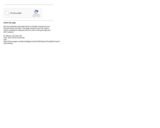
This is a handout I have used to help faculty identify and use Open Educational Resources.
- Subject:
- Education
- Material Type:
- Diagram/Illustration
- Author:
- David O. Smith
- Date Added:
- 02/02/2021

This is a handout I have used to help faculty identify and use Open Educational Resources.

BCC Bioscience Image Library is a media file repository of images and video clips made available to educators and students in the biological sciences. The resources are created by faculty, staff and students of Berkshire Community College and are licensed under Creative Commons 0. This means all content is free, with no restrictions on how the material may be used, reused, adapted or modified for any purposes, without restriction under copyright or database law.
This project was partially funded by a $20,000,000 grant awarded by the U.S. Department of Labor’s Employment and Training Administration, Grant # TC-26450-14-60-A-25. The product was created by the grantee and does not necessarily reflect the official position of the U.S. Department of Labor. The U.S. Department of Labor makes no guarantees, warranties, or assurances of any kind, express or implied, with respect to such information, including any information on linked sites and including, but not limited to, accuracy of the information or its completeness, timeliness, usefulness, adequacy, continued availability, or ownership.
If you have any questions contact Professor Faye Reynolds at: freynold@berkshirecc.edu
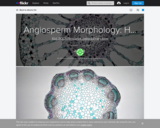
BCC Bioscience Image Library is a media file repository of images and video clips made available to educators and students in the biological sciences. The resources are created by faculty, staff and students of Berkshire Community College and are licensed under Creative Commons 0. This means all content is free, with no restrictions on how the material may be used, reused, adapted or modified for any purposes, without restriction under copyright or database law.
This project was partially funded by a $20,000,000 grant awarded by the U.S. Department of Labor’s Employment and Training Administration, Grant # TC-26450-14-60-A-25. The product was created by the grantee and does not necessarily reflect the official position of the U.S. Department of Labor. The U.S. Department of Labor makes no guarantees, warranties, or assurances of any kind, express or implied, with respect to such information, including any information on linked sites and including, but not limited to, accuracy of the information or its completeness, timeliness, usefulness, adequacy, continued availability, or ownership.
If you have any questions contact professor Faye Reynolds at: freynold@berkshirecc.edu
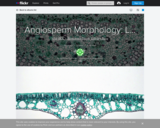
BCC Bioscience Image Library is a media file repository of images and video clips made available to educators and students in the biological sciences. The resources are created by faculty, staff and students of Berkshire Community College and are licensed under Creative Commons 0. This means all content is free, with no restrictions on how the material may be used, reused, adapted or modified for any purposes, without restriction under copyright or database law.
This project was partially funded by a $20,000,000 grant awarded by the U.S. Department of Labor’s Employment and Training Administration, Grant # TC-26450-14-60-A-25. The product was created by the grantee and does not necessarily reflect the official position of the U.S. Department of Labor. The U.S. Department of Labor makes no guarantees, warranties, or assurances of any kind, express or implied, with respect to such information, including any information on linked sites and including, but not limited to, accuracy of the information or its completeness, timeliness, usefulness, adequacy, continued availability, or ownership.
If you have any questions contact professor Faye Reynolds at: freynold@berkshirecc.edu
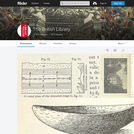
The British Library’s collections on Flickr Commons offer access to millions of public domain images, which we encourage you to explore and re-use. The release of these collections into the public domain represent the Library's desire to improve knowledge of and about them, to enable novel and unexpected ways of using them, and to begin working with researchers to explore and interpret large scale digital collections.
The first set we have added come from a British Library Labs project dubbed the Mechanical Curator, which located more than a million images from within our digitised collection of over 65,000 books from the 17th, 18th and 19th centuries. Over time more public domain collections will be added.
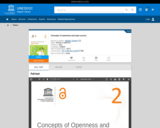
Unit 1 of this Module gives a general overview of open access movement, its genesis, and various actors. It also relates to two other interlinked public movements, namely, open source software (OSS) movement and open educational resources (OER).
Unit 2 titled “Routes to Open Access” gives overview and definitional approaches two different routes of OA – the Green and Gold routes. It also discusses a hybrid model, where toll-access e-journals are publishing open access articles. Here, subscription-based contents and open access contents coexist in a single platform.
Unit 3 titled “Networks and Organizations Promoting Open Access” elaborates roles of different regional and international networks and organizations in promoting OA. Various OA actors and advocates are found to harmonize global OA movement through formal networks and coalitions. These networks and organizations also strengthen capacity and capability of local institutions and help them in social capital formation.
Unit 4 titled “Study of OA Mandates and Policies” elaborates different institutional and funders’ OA mandates. Some of these mandates have become model OA policies for similar institutions and organizations.
Unit 5 titled “Issues and Challenges of Open Access” discusses concerns, issues and challenges related to OA scholarly literature. No doubt, there is apprehension due to arrival of predatory OA journals in OA domain, with vested profiteering interest. But there are checks and balances to avoid such predatory journals. Due to OA advocacy and awareness raising efforts, OA knowledge producers have improved researchers’ perceptions in quality and recognition of OA literature. This Unit briefly discusses different metrics and performance indicators available for assessing OA scholarly literature.

Information about how to determine whether a published work between 1923 and 1978 is in the public domain.
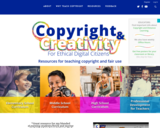
These materials aim to provide accessible and practical information about copyright – its protections, its limitations, and its role in encouraging creativity. Rather than just emphasizing what copyright prohibits, the goal here is to offer useful and positive information about what copyright allows and how students can successfully navigate and rely on copyright in their own roles as creators.
It is important to note that these materials focus on copyright in the United States. Other countries have similar frameworks, but their rules may differ on certain concepts such as fair use.
Lessons for students in grades K-12 are provided in pdf and google slide format.

The AASL Standards Framework for Learners includes the shared foundation of Engage. This standard guides students to the ethical use of information, including things created by others as well as by the students themselves. Students will explore background on copyright and fair use, understand creative commons and how to use it, as well as discover public domain resources. Lesson Outcomes for Students: Define copyright and fair use; Identify and understand Creative Commons licenses; Apply a Creative Commons license to a product; Search for Creative Commons and public domain materials on the web; Properly attribute Creative Commons and public domain materials. Cover Image Attribution: Pixabay, CC0
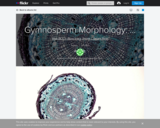
BCC Bioscience Image Library is a media file repository of images and video clips made available to educators and students in the biological sciences. The resources are created by faculty, staff and students of Berkshire Community College and are licensed under Creative Commons 0. This means all content is free, with no restrictions on how the material may be used, reused, adapted or modified for any purposes, without restriction under copyright or database law.
This project was partially funded by a $20,000,000 grant awarded by the U.S. Department of Labor’s Employment and Training Administration, Grant # TC-26450-14-60-A-25. The product was created by the grantee and does not necessarily reflect the official position of the U.S. Department of Labor. The U.S. Department of Labor makes no guarantees, warranties, or assurances of any kind, express or implied, with respect to such information, including any information on linked sites and including, but not limited to, accuracy of the information or its completeness, timeliness, usefulness, adequacy, continued availability, or ownership.
If you have any questions contact professor Faye Reynolds at: freynold@berkshirecc.edu
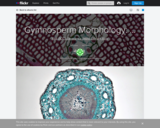
BCC Bioscience Image Library is a media file repository of images and video clips made available to educators and students in the biological sciences. The resources are created by faculty, staff and students of Berkshire Community College and are licensed under Creative Commons 0. This means all content is free, with no restrictions on how the material may be used, reused, adapted or modified for any purposes, without restriction under copyright or database law.
This project was partially funded by a $20,000,000 grant awarded by the U.S. Department of Labor’s Employment and Training Administration, Grant # TC-26450-14-60-A-25. The product was created by the grantee and does not necessarily reflect the official position of the U.S. Department of Labor. The U.S. Department of Labor makes no guarantees, warranties, or assurances of any kind, express or implied, with respect to such information, including any information on linked sites and including, but not limited to, accuracy of the information or its completeness, timeliness, usefulness, adequacy, continued availability, or ownership.
If you have any questions contact professor Faye Reynolds at: freynold@berkshirecc.edu
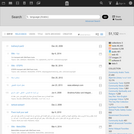
This site contains many books of every language that have entered the public domain or that were uploaded by copyright holders. A growing number of Arabic texts, as well as audio and video files (including famous speeches and songs), may be found by searching this site. Searches can be performed using Latin characters or Arabic characters, and advanced search options can help isolate desired resources.
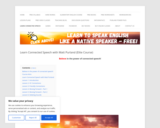
This is a brand new complete free English pronunciation course in the public domain. The main aim is to teach learners how to use connected speech in English. The course uses PowerPoint slides, MP3 audio files, interactive comprehension quizzes, discussion questions, practice activities, and links to further helpful resources.
The aims of the course are to:
- understand what connected speech is and why it is important
- be able to perform the four main actions of connected speech
- learn and practice the little-known techniques of connected speech
- feel more confident in using spoken English to communicate daily
- better understand native speakers when they speak English

This book is intended to give the non-expert an overview of standards and best practises related to publishing metadata about works. Its primary focus is metadata from cultural heritage institutions - i.e. GLAM institutions (galleries, libraries, archives and museums).
The book was started to help us get to grips with diverse collections of metadata which we were interested in using to figure out which works have entered the public domain in which different countries. At the OKF, we have been working on the developement of automated calculation to determine the public domain status of a work (see http://publicdomain.okfn.org/calculators), and we soon realized that we often do not have the necessary metadata to accurately determine whether or not a work is in the public domain. We have obtained data from different sources, e.g. BBC, British National Library, but we need to combine this data in meaningful ways in order to achieve a more comprehensive set of metadata. This required us to engage in the process of vocabulary alignment, removing duplicate entries, understanding whether similar fields actually mean the same thing, and figuring out whether different data models are compatible with each others.
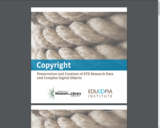
This guide focuses specifically on some of the decisions you may need to make regarding the materials you have created or used in your research process, including drawings and photographs, tables and charts, lab notes and datasets, interviews and newscasts, software and digital artworks. It describes in non-legal language the basics of a few important terms, including “fair use,” “public domain,” “Creative Commons,” and “patent” as they may apply to these materials. Failure to consider the implications of different copyright and patent approaches for your own work can limit the impact of your work. Failure to adequately review, vet, and seek permission to use others’ work can, in a worst-case scenario, prevent your work from getting published or (in rare cases) lead to legal actions.
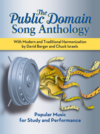
The Public Domain Song Anthology by David Berger and Chuck Israels is a collection of 348 popular songs with modern and traditional harmonization for both study and performance. This open educational resource was curated by two leading jazz repertory experts and consists of songs in the US public domain. This anthology is the first of its kind and is free for students and performers to use, adapt, remix, and share. The songs, many of which are at risk of being forgotten, are free of copyright restrictions and are available in multiple formats to promote greater usage and dissemination.
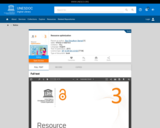
This module focuses on resource optimization in general that aims to discuss how the open access environment can be promoted and how the collection development may be facilitated by integrating open access resources with institutional and library resources. At the end of this module, the learner is expected to be able to foster an enabling environment for Open Access, and facilitate collection development by integrating library services.
The module consists of three units. Unit 1 deals with OA mandates and policies; Unit 2 focuses on OA content management; and unit 3 is on harvesting and integration. The Unit 1 which is on open access mandates and policies portraits different policies and mandates at international, national and institutional levels and the related issues. Formulation of Policies/Mandates by the publishers/copy right holders/funding agencies facilitates the wider accessibility of scholarly communications. Through this unit you will be acquainted with sources of OA mandates and policies and analyze the features of some important policies in use. The aim is to prepare you to develop competency to frame a draft OA policy for your institution.

This lesson introduces you to the basics of U.S. copyright protection. Copyright is a form of legal protection that allows authors and other creators to control their original, creative work.By the end, you will be able to distinguish between what qualifies for copyright protection and what does not, as well as define basic copyright terms such as public domain and derivative.The content in this lesson is organized using the 6 Ws, outlined below:Why does copyright protection exist?Whose work is protected by copyright?What can copyright holders do with their copyrights?Which works can be protected by copyright?When is a work protected by copyright?Where are copyrighted works protected?
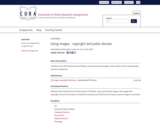
Introduces the ethical dimension of finding, using, and sharing images in the context of the undergraduate research assignment. Students will understand the ethical aspects of finding, using, and sharing images; will engage with copyright issues and concepts of intellectual property; and will find and analyze specific images as examples.